 Listen to this article
•
15:34 min
Listen to this article
•
15:34 min
In 2006, at a marketplace in Arunachal Pradesh, Kedar Bhide (one of India’s most effective snake conservationists) spotted a snakeskin adorning the scabbard of a dao (machete) strung over a Nyishi tribesman’s shoulder. The skin was unusual, something he’d never seen before, leading him to strike up a conversation with the owner of the weapon. It was the first time Bhide heard the word “bartha”. The local word bartha referred to Kaulback’s lance-headed pit viper, unknown in Indian herpetology conservation circles until then. A year after he first spotted that skin, Kedar and a few others followed this lead and went looking for the species. They found two specimens and the discovery sent waves of wonder through India’s herpetological community.
India’s Northeastern Region politically made up of Assam, Tripura, Meghalaya, Mizoram, Manipur, Nagaland, Arunachal Pradesh, and Sikkim boasts some of the highest reptile diversity in the country. Although not officially part of this region, North Bengal also falls within this geographic space and shares species with India’s wondrous Northeast.
Of all the incredible reptiles found here, pit vipers are surely the most intriguing. With new species being discovered and described at regular intervals, anyone who has spent time in the area will know that there is much more in store.
Locally, when a snake is spotted, the first step in their protocol is to behead the animal. If the snake escapes or is too high to reach, some tribal folks believe that they need to cross a large stream or river seven times before they get home. Failure to do so, it is believed, will result in the snake following them home and exacting revenge.
My first trip to Arunachal Pradesh was in 2010. I travelled to Talle Wildlife Sanctuary, a 337-sq-km protected area that is around 32 km from the town of Ziro. The sanctuary stretches between the altitudes of 1,200 to 3,600 m and is part of the Eastern Himalayas, a biodiversity hotspot with numerous rare and threatened species.
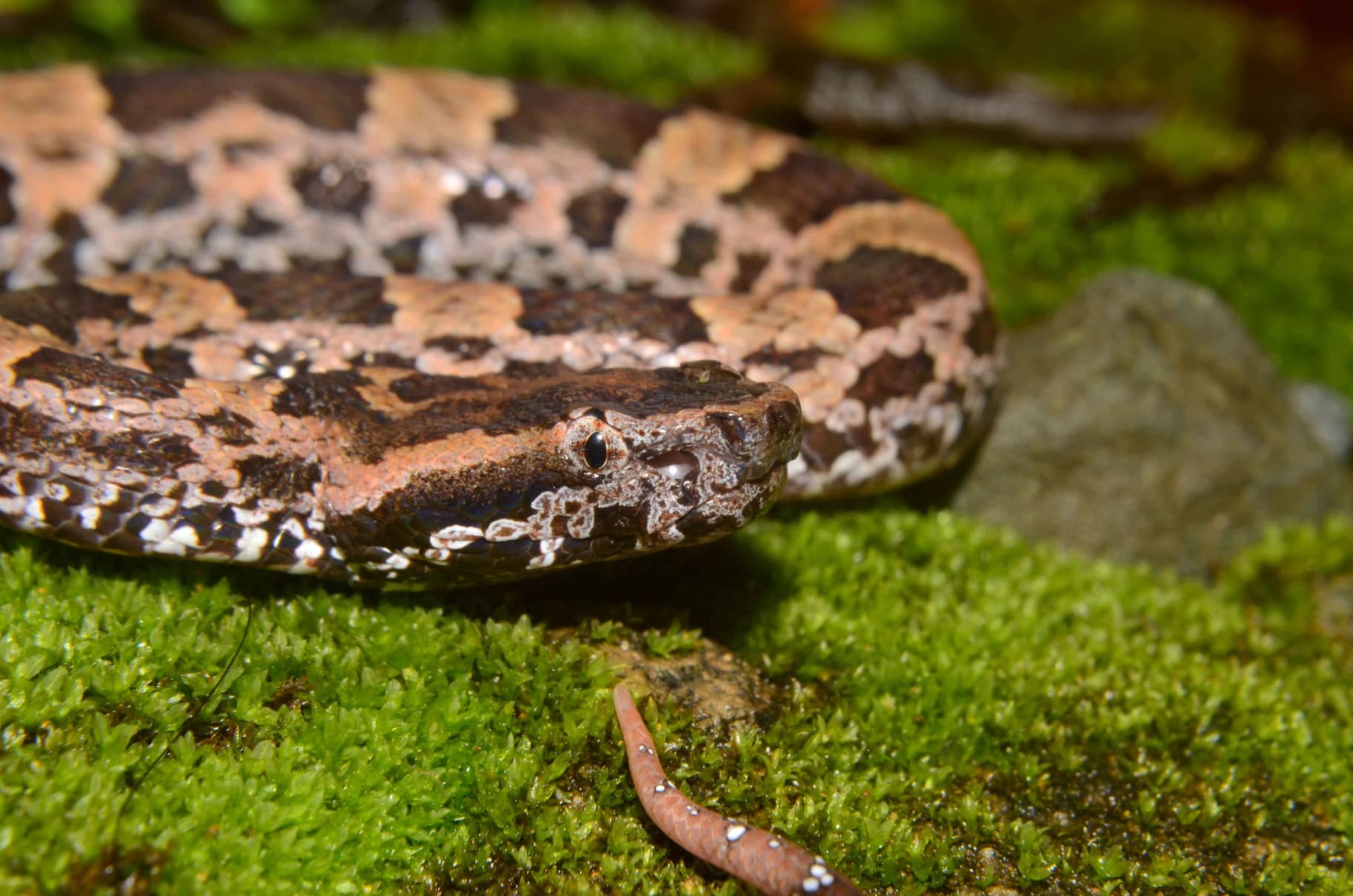
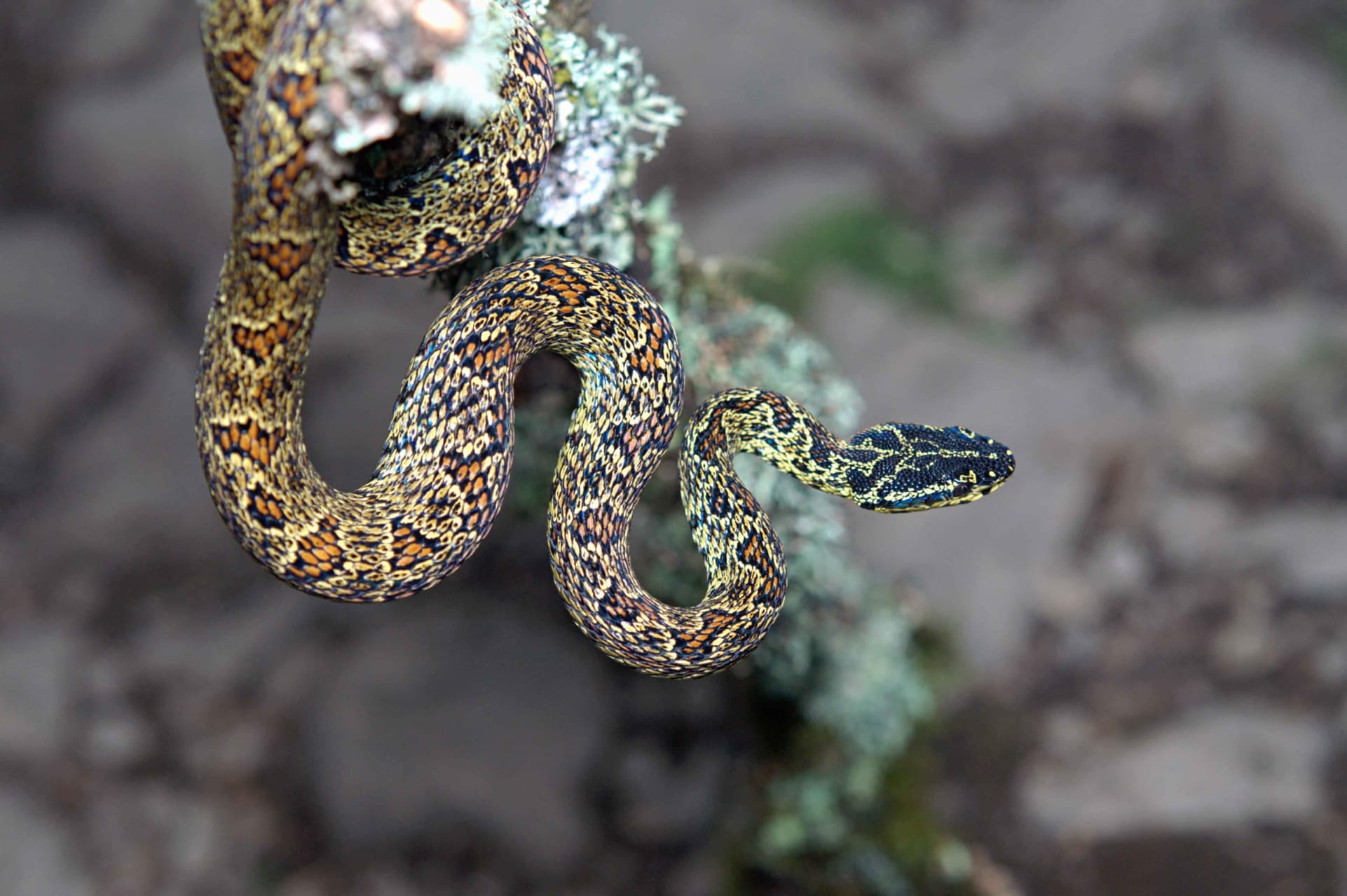
The other species that we found on that trip to Talle was the Jerdon’s pit viper (Protobothrops jerdonii). We found two males, both basking after a rainy night, quite near the ground on small shrubs on the edge of a mud track at an altitude of approximately 2,400 m. The species is a visual treat. With a speckled black, yellow, brown, and red pattern, it was one of the most gorgeous snakes I had ever laid my eyes on. Like a small handful of species, the Jerdon’s pit viper goes through what’s called ontogenic variation. Interestingly, the snake’s entire pattern changes from birth, through its growth to adulthood. This is probably something to do with them occupying different microhabitat niches through their growth. Although the young are more brightly coloured, you can be sure that in their natural environment they will be just as cryptic as the best-camouflaged snakes.
Our conversations with members of the Apathani tribe didn’t yield a local name specific to this snake, though the Nyishi seem to call it thaaji. However, it wasn’t exactly clear whether the word refers to the Jerdon’s pit viper or broadly (and loosely) describes arboreal, non-green pit vipers. Some talk of an “arrow” mark on the thaaji that is absent in the bartha, while others swear the converse is true. In all fairness, none of the Arunachali folk we spoke to spend time looking carefully at snakes. Photo: ePhotocorp/Getty Images
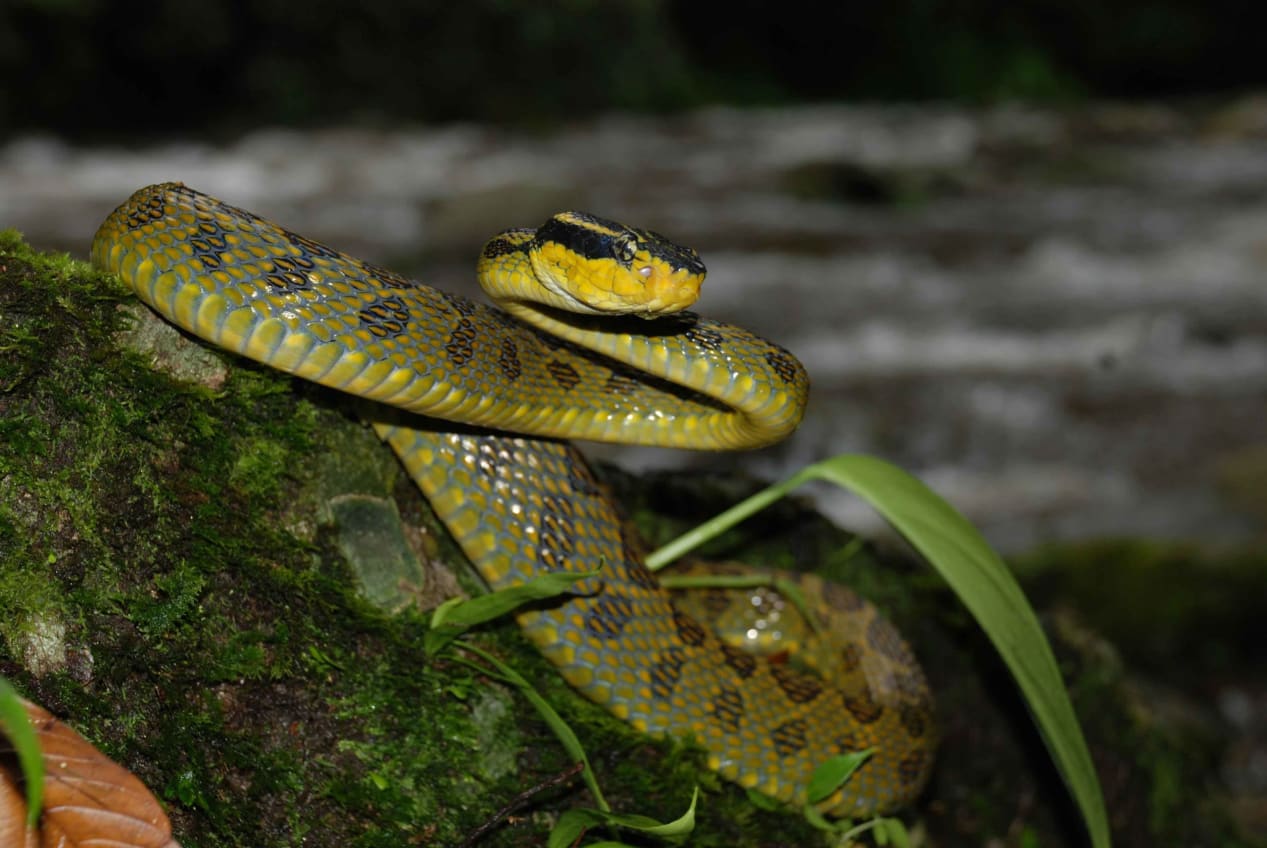
After that first visit to Arunachal Pradesh, I travelled there each year at different times, looking for the bartha, to better understand its venom and the reality of snakebite in the region. Interestingly, when we began enquiring, we couldn’t find any recent bite cases and the last bite from a bartha in Leporiang (the village famous for the species) had been in 2000. There were some reports of a man, apparently the only person known to survive the bite from the species. His hand had become completely gnarled by the bite. However, whether the snake’s venom is potent enough to kill humans or whether mortality is a result of some horrific first-aid and traditional remedies is still undetermined.
The only bartha we found was a 1.3-m-long male. Mid-morning, I was informed by a couple of youth from a nearby forest settlement that there was a large snake up in a tree. Presuming it was some sort of a rat snake or racer, I headed off on the 7-km trek to take a look. Perched on an epiphyte about six metres up on a tree was a snake. With some graceless climbing and the invaluable assistance of a bunch of locals, we managed to bring it down and bag it. The bartha was a feast to the eyes. Photo: Vishal Santra
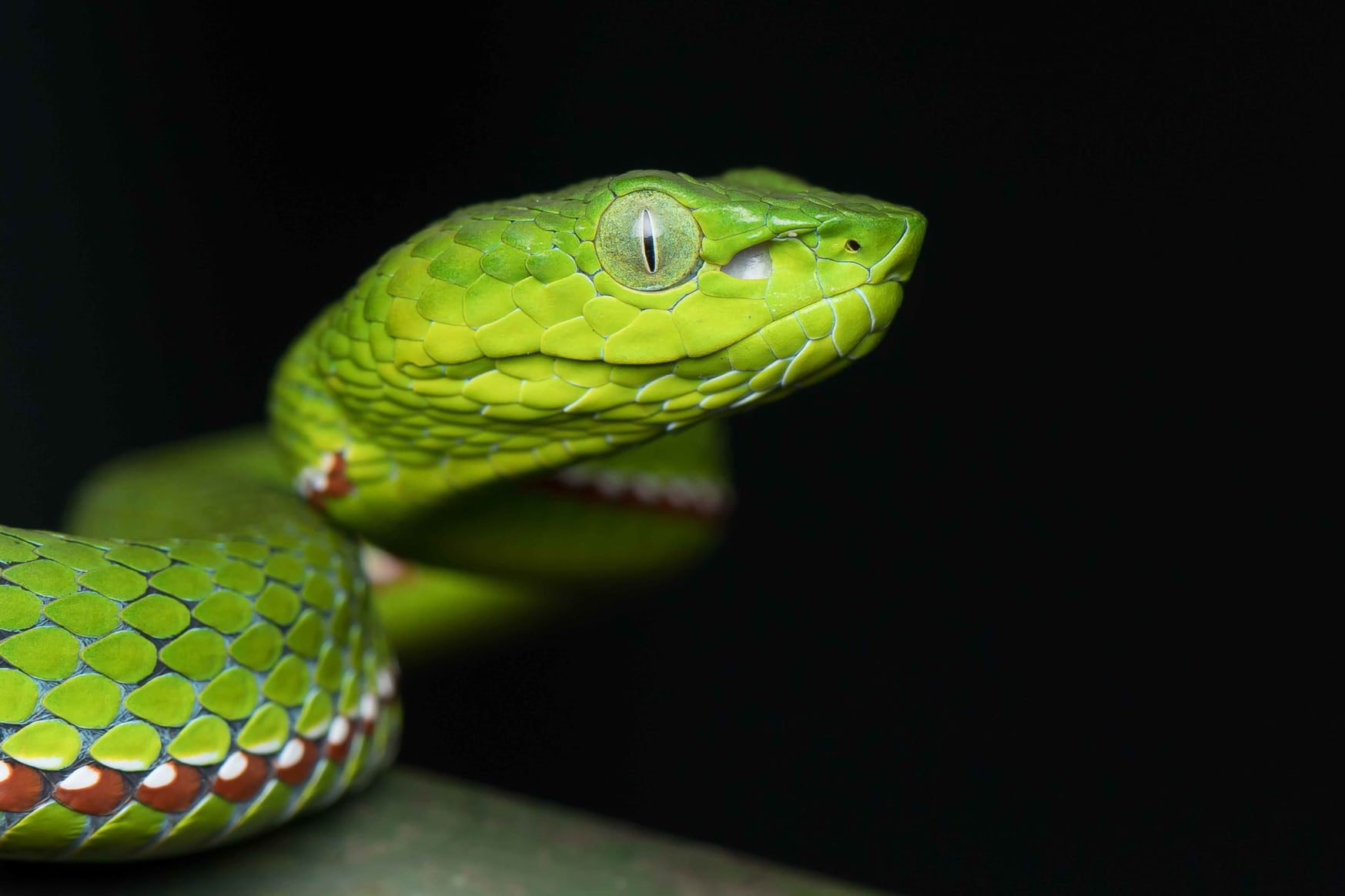
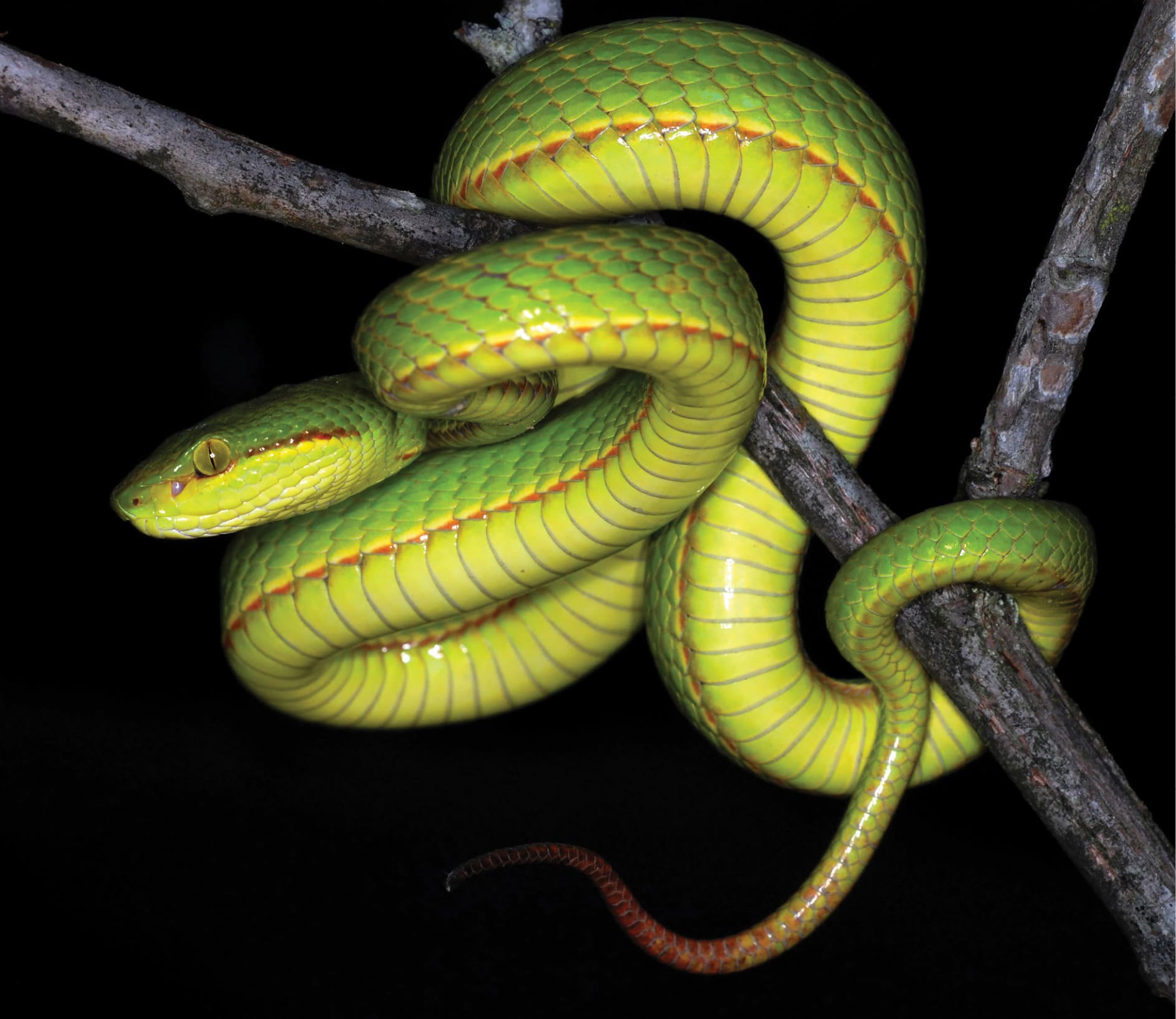
The third lancehead species from India is the Himalayan lancehead pit viper (Protobothrops himalayanus). Described around 2016-17, it is another little-known, tremendously beautiful and large pit viper from Sikkim. The striations on the scales enable it to hide in plain sight amidst the mossy and lichen-covered vegetation of Northeast India.
There is so much more to learn about these jewels of the tropical and sub-tropical forests of Northeast India. Hopefully, their enigmatic charisma will stem more enquiry into the lives of these most evolved of snakes. Photos: Vishal Santra













